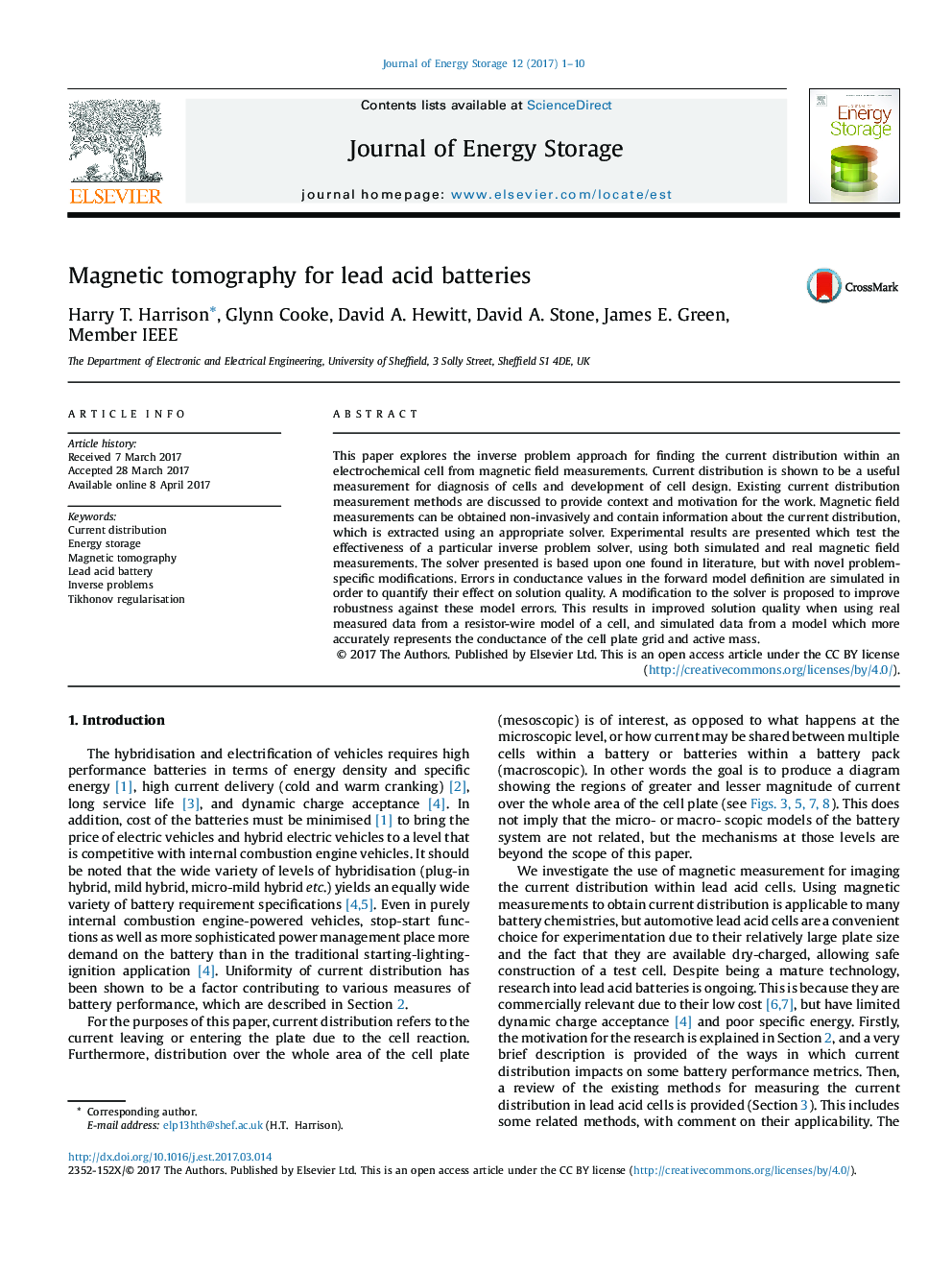| Article ID | Journal | Published Year | Pages | File Type |
|---|---|---|---|---|
| 5127282 | Journal of Energy Storage | 2017 | 10 Pages |
â¢Existing inverse problem solver is not robust to forward model errors.â¢Modification is proposed which increases error tolerance.â¢Use of graphical finite element software as the forward model is demonstrated.â¢Solver is tested on a conductive model of a lead acid cell plate.
This paper explores the inverse problem approach for finding the current distribution within an electrochemical cell from magnetic field measurements. Current distribution is shown to be a useful measurement for diagnosis of cells and development of cell design. Existing current distribution measurement methods are discussed to provide context and motivation for the work. Magnetic field measurements can be obtained non-invasively and contain information about the current distribution, which is extracted using an appropriate solver. Experimental results are presented which test the effectiveness of a particular inverse problem solver, using both simulated and real magnetic field measurements. The solver presented is based upon one found in literature, but with novel problem-specific modifications. Errors in conductance values in the forward model definition are simulated in order to quantify their effect on solution quality. A modification to the solver is proposed to improve robustness against these model errors. This results in improved solution quality when using real measured data from a resistor-wire model of a cell, and simulated data from a model which more accurately represents the conductance of the cell plate grid and active mass.
